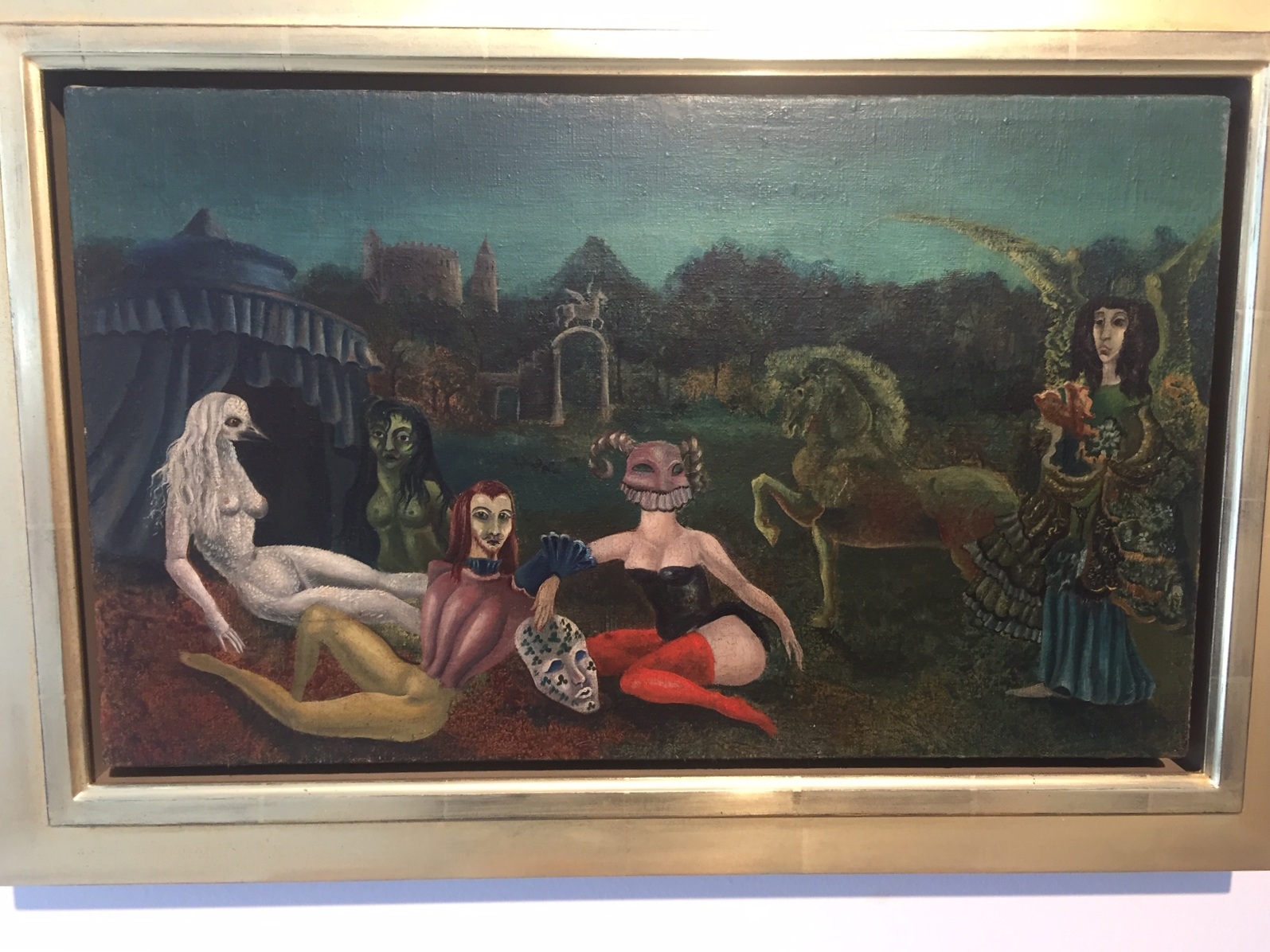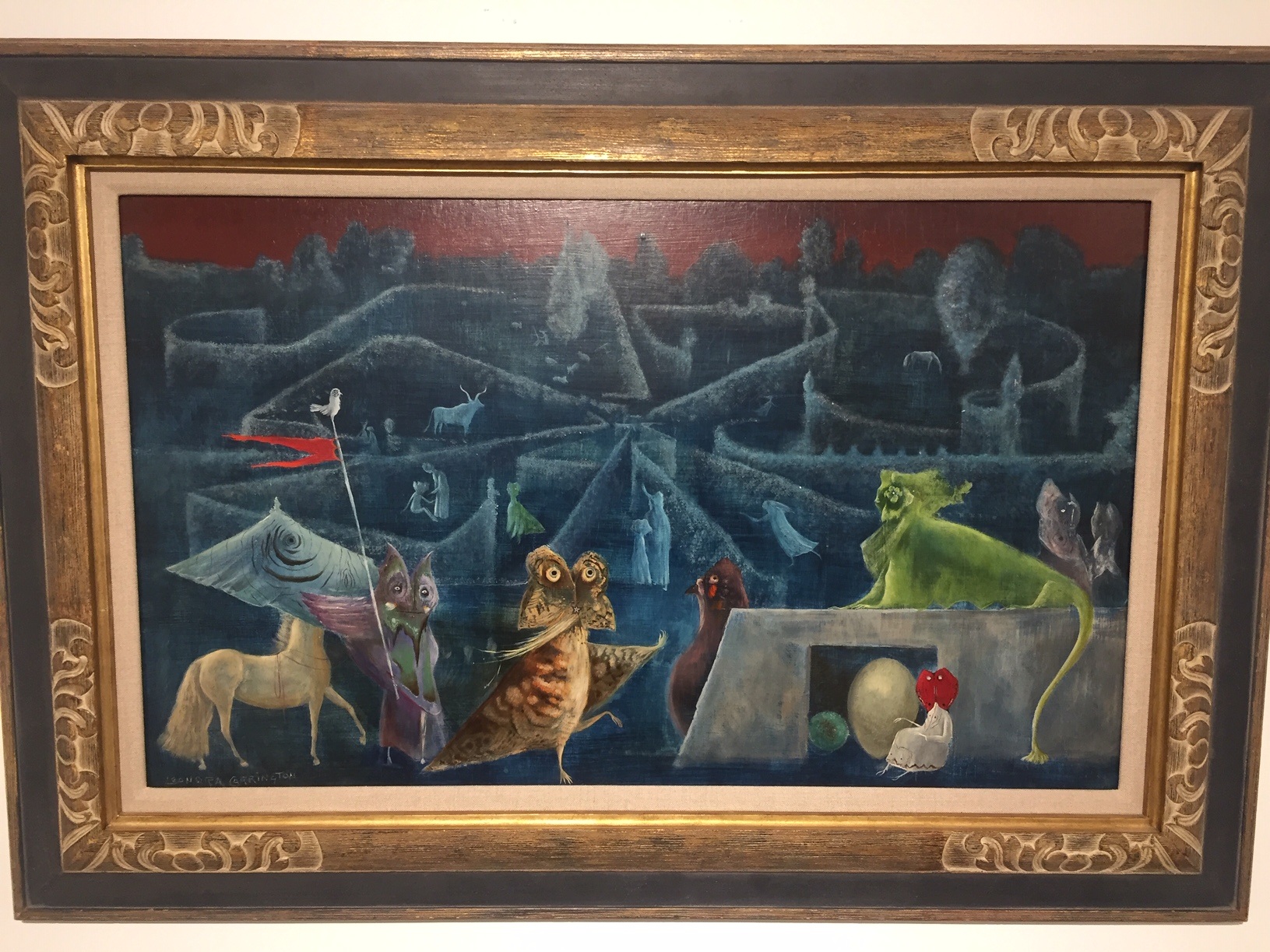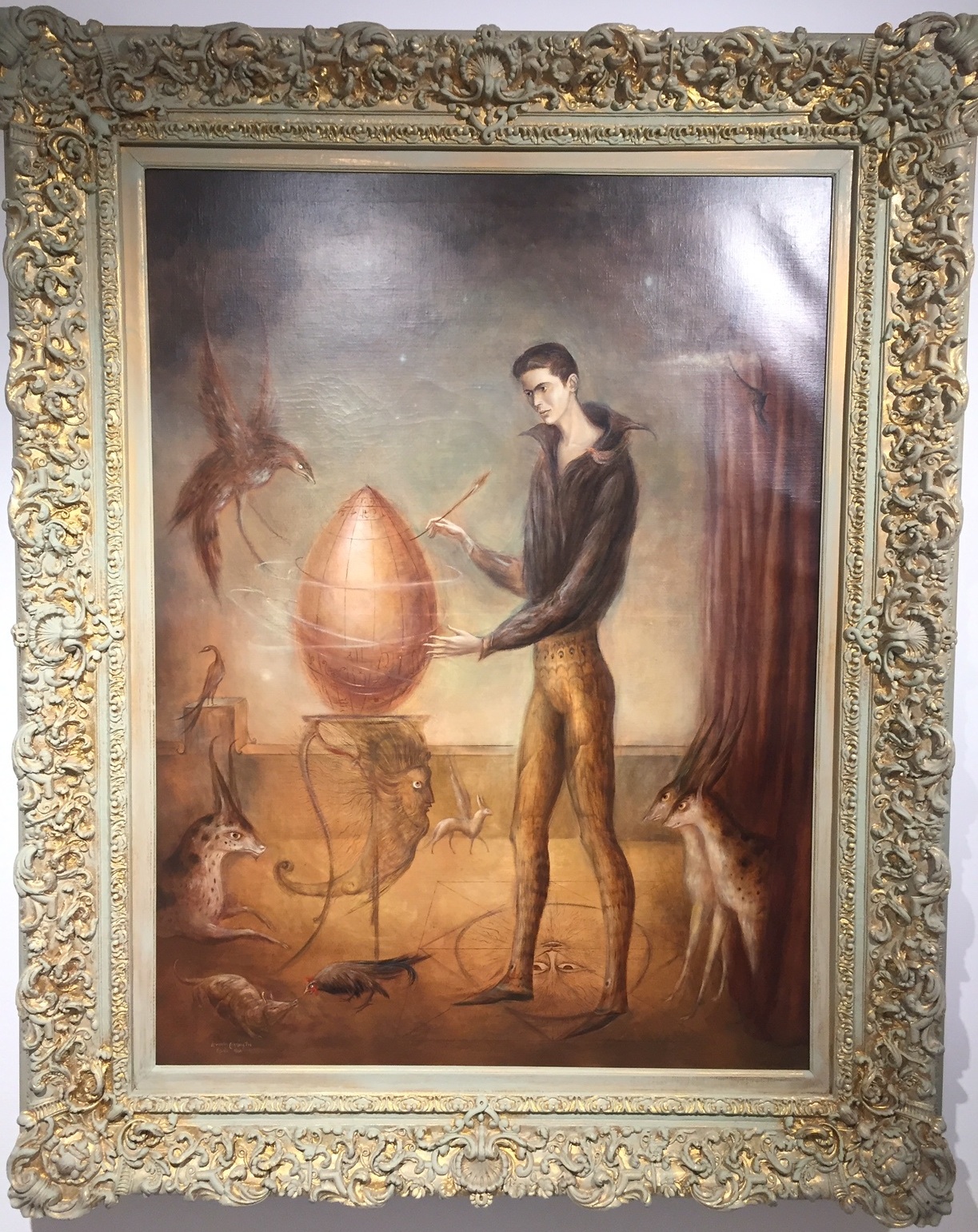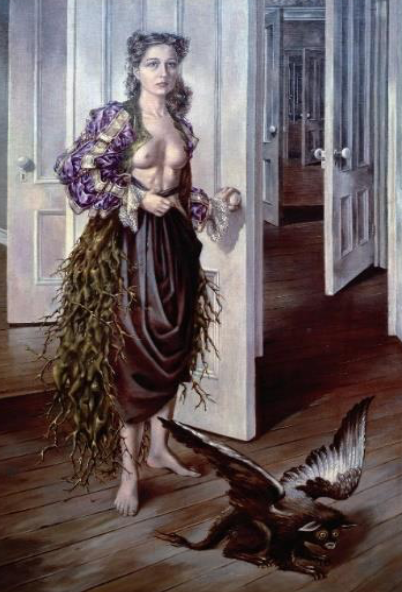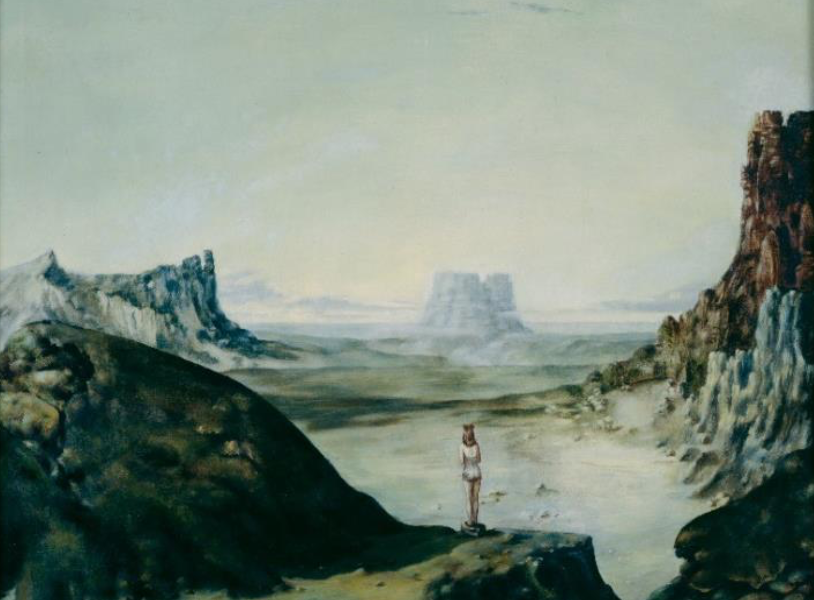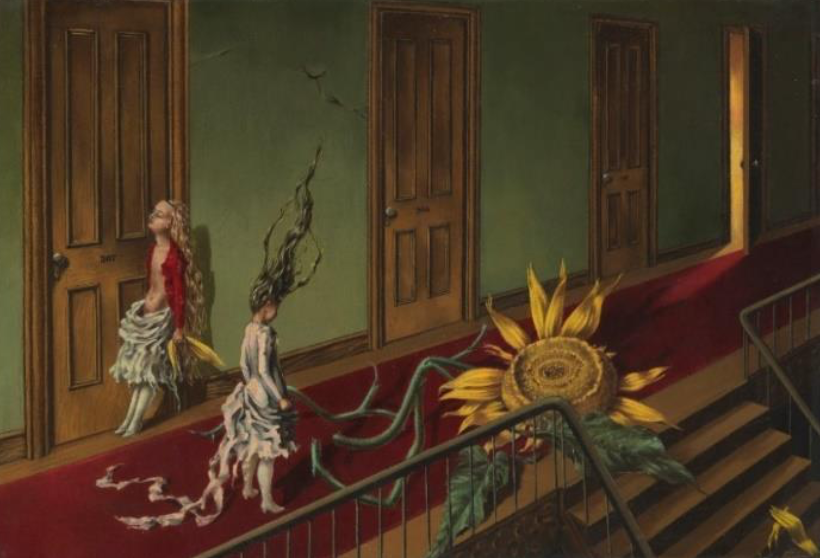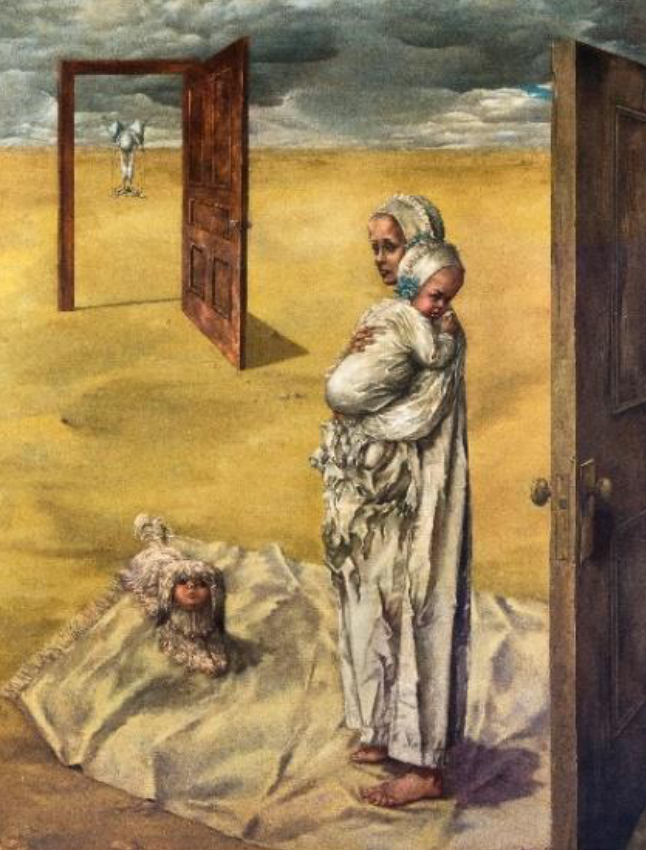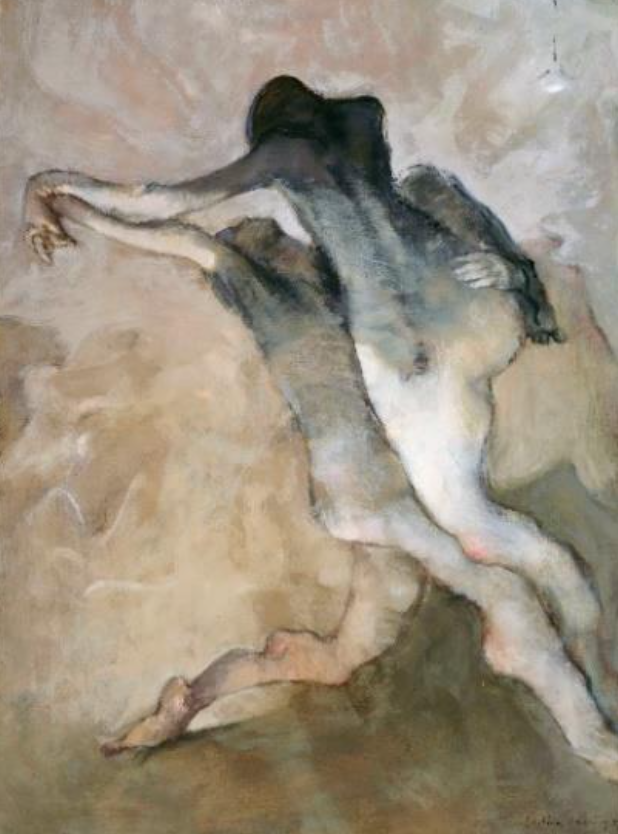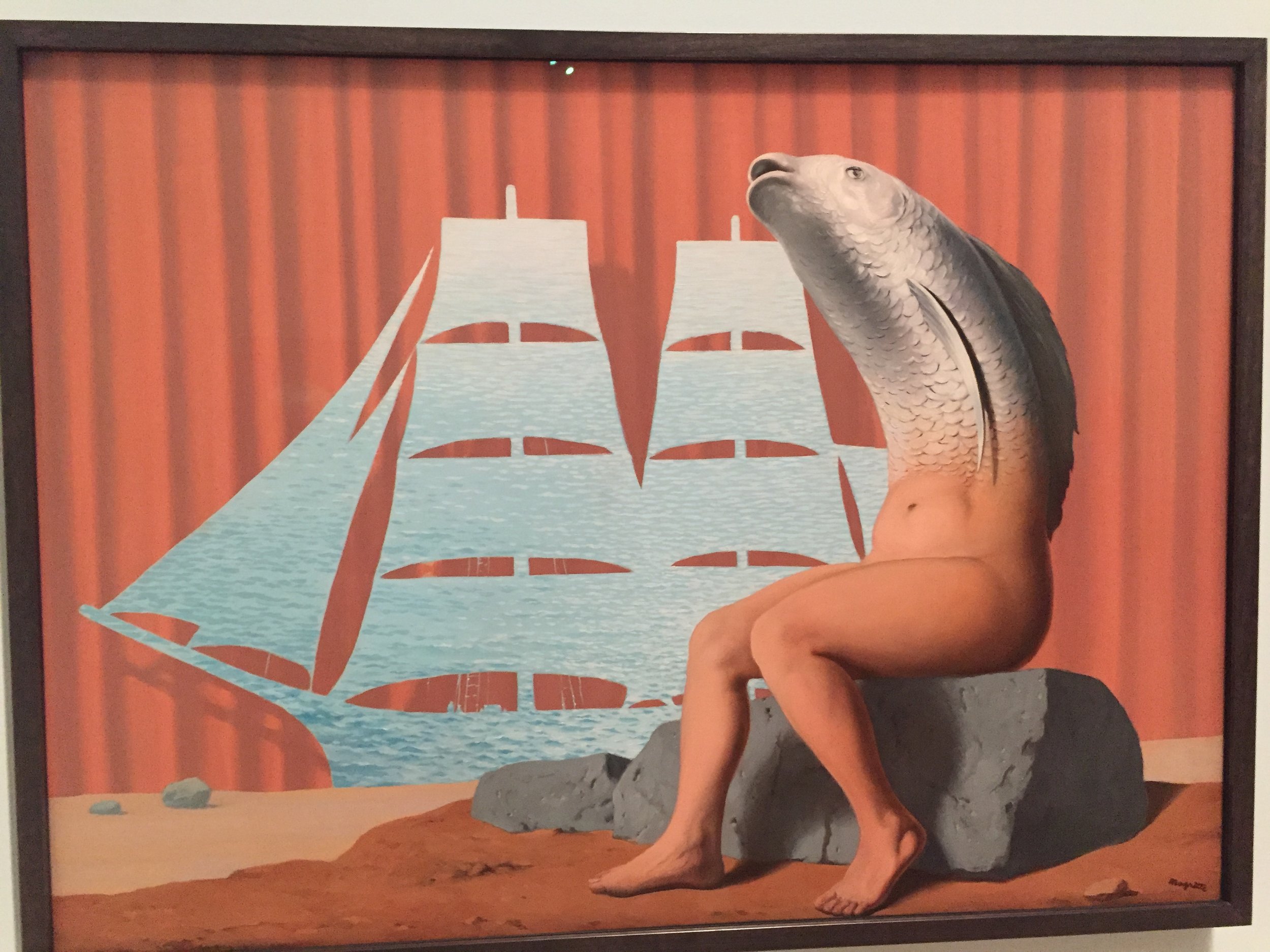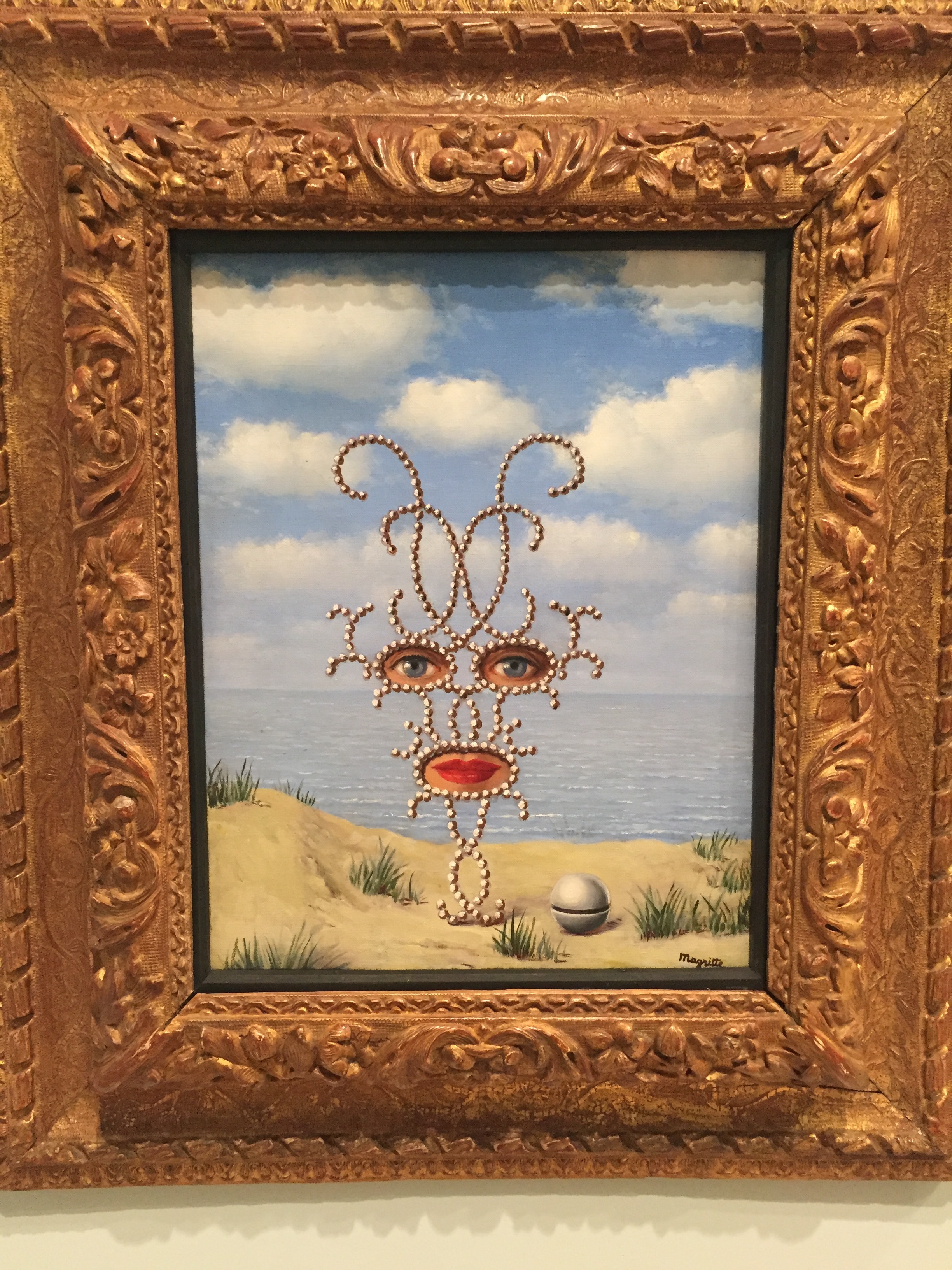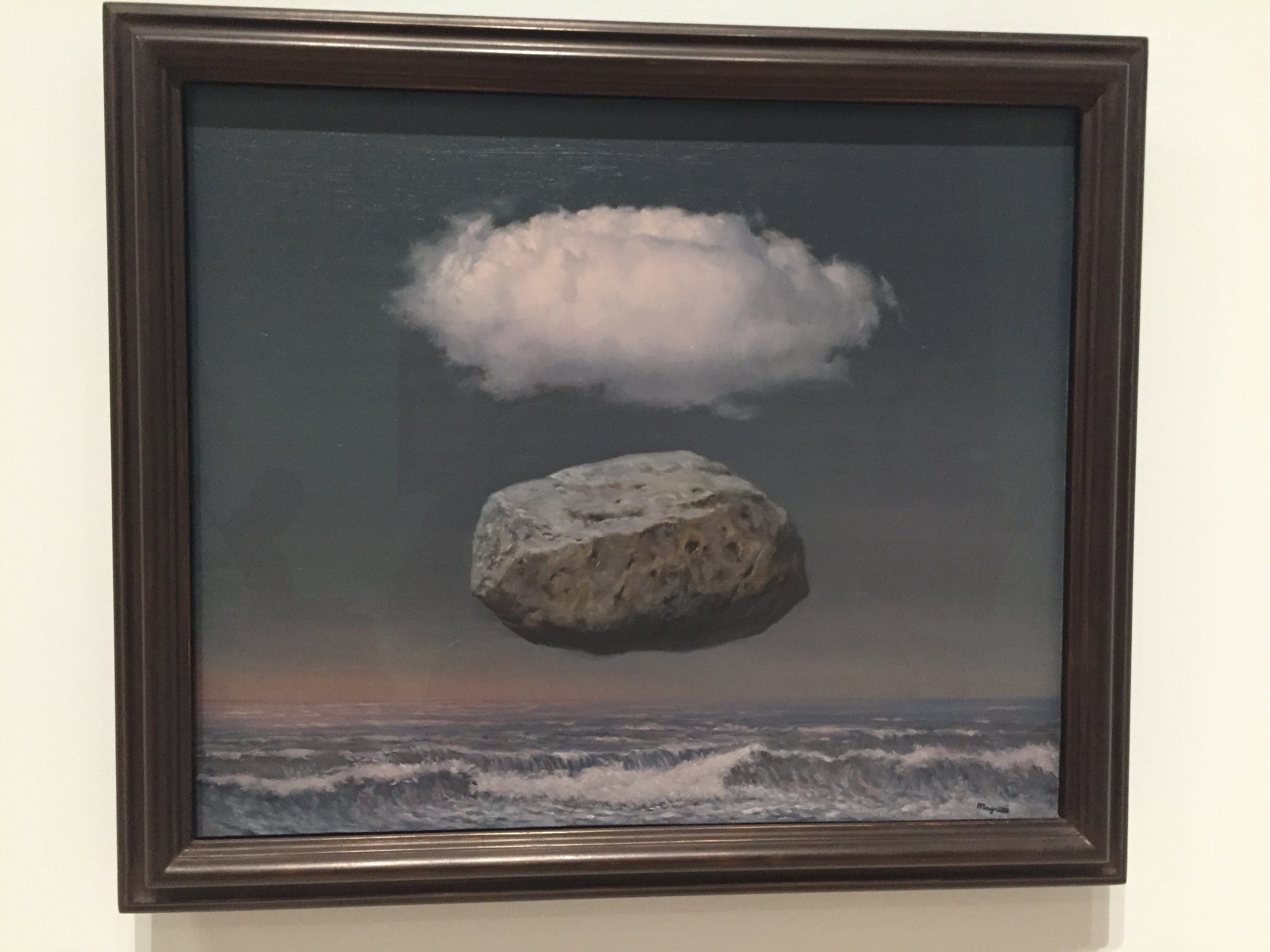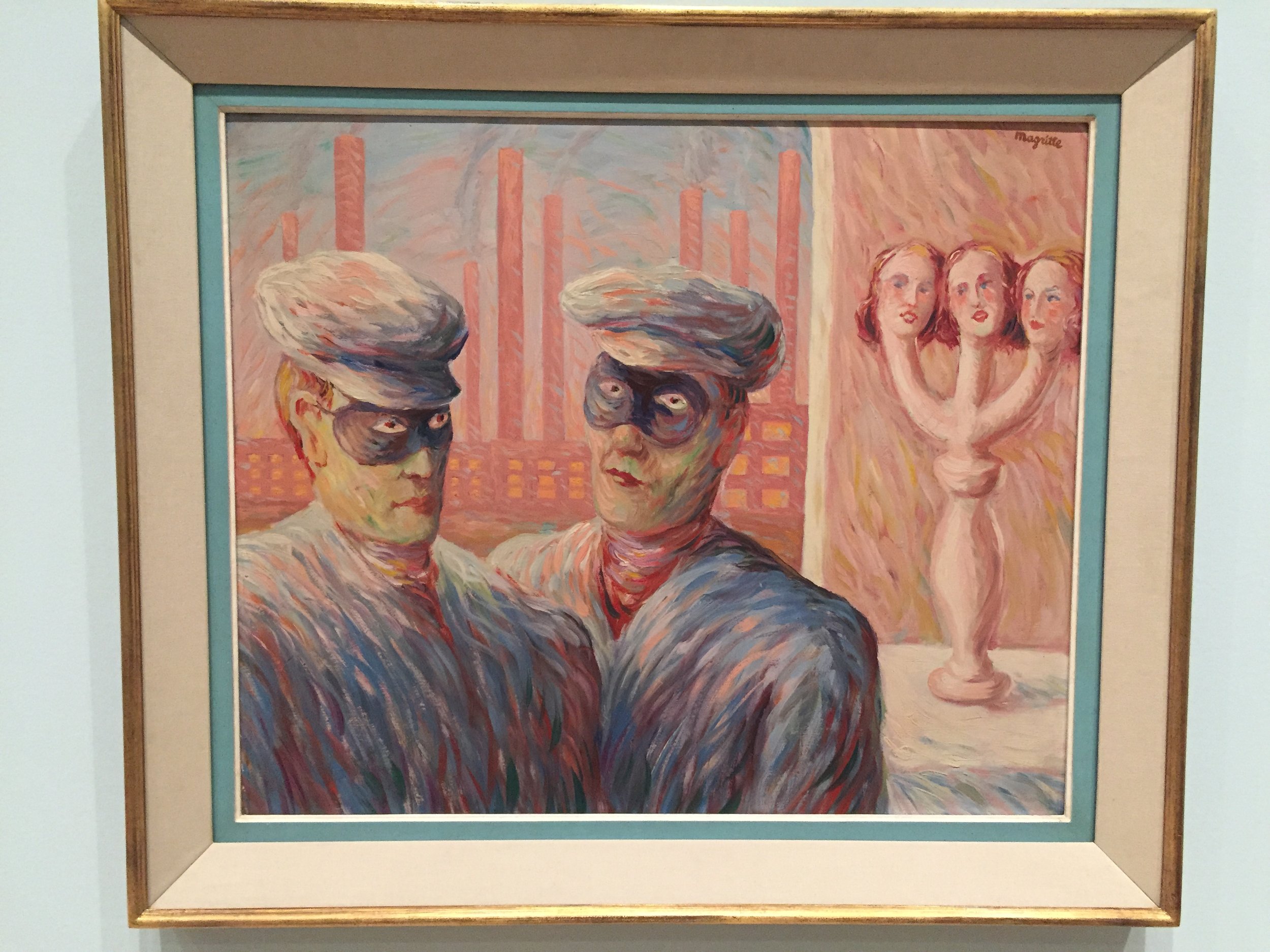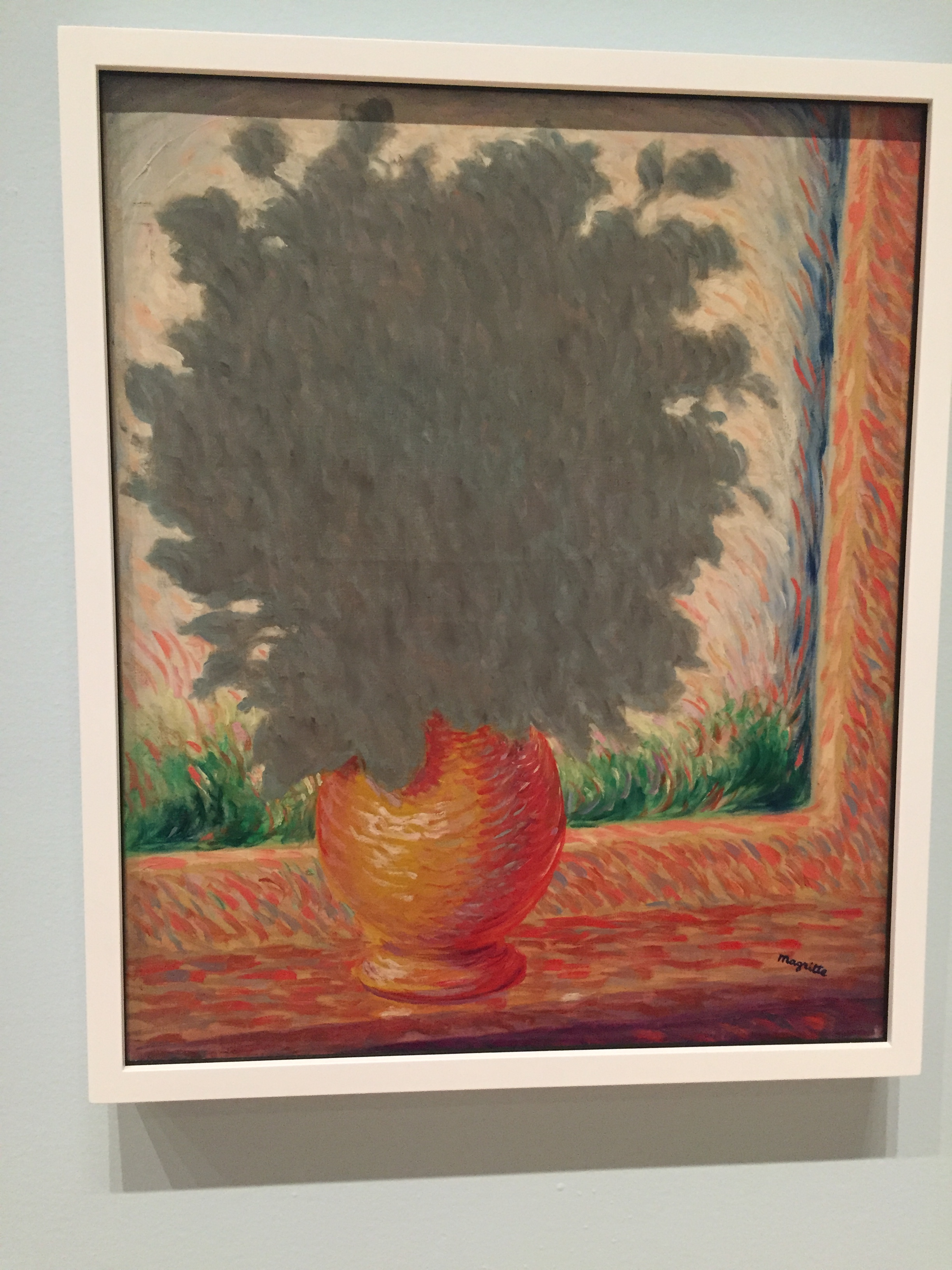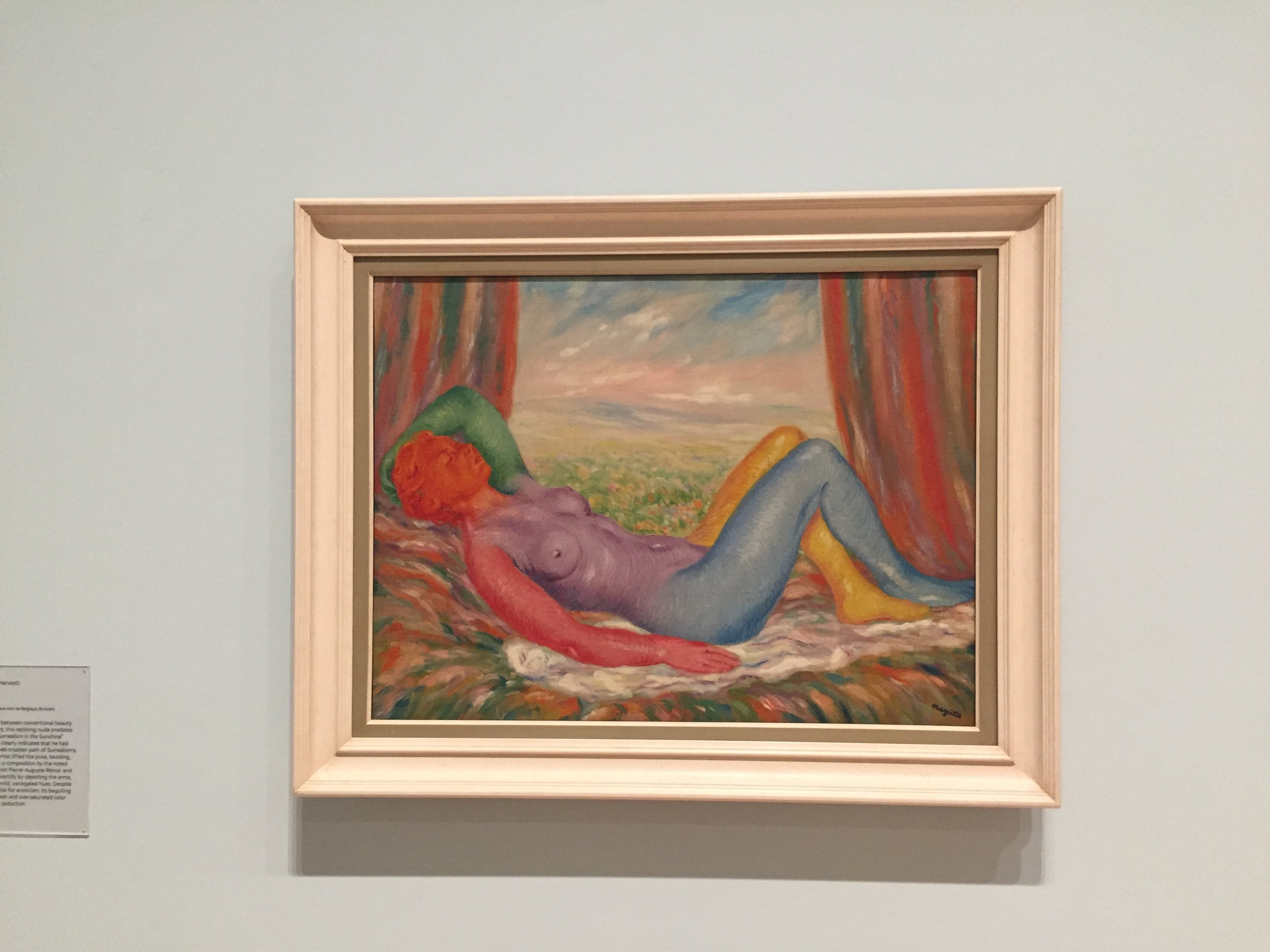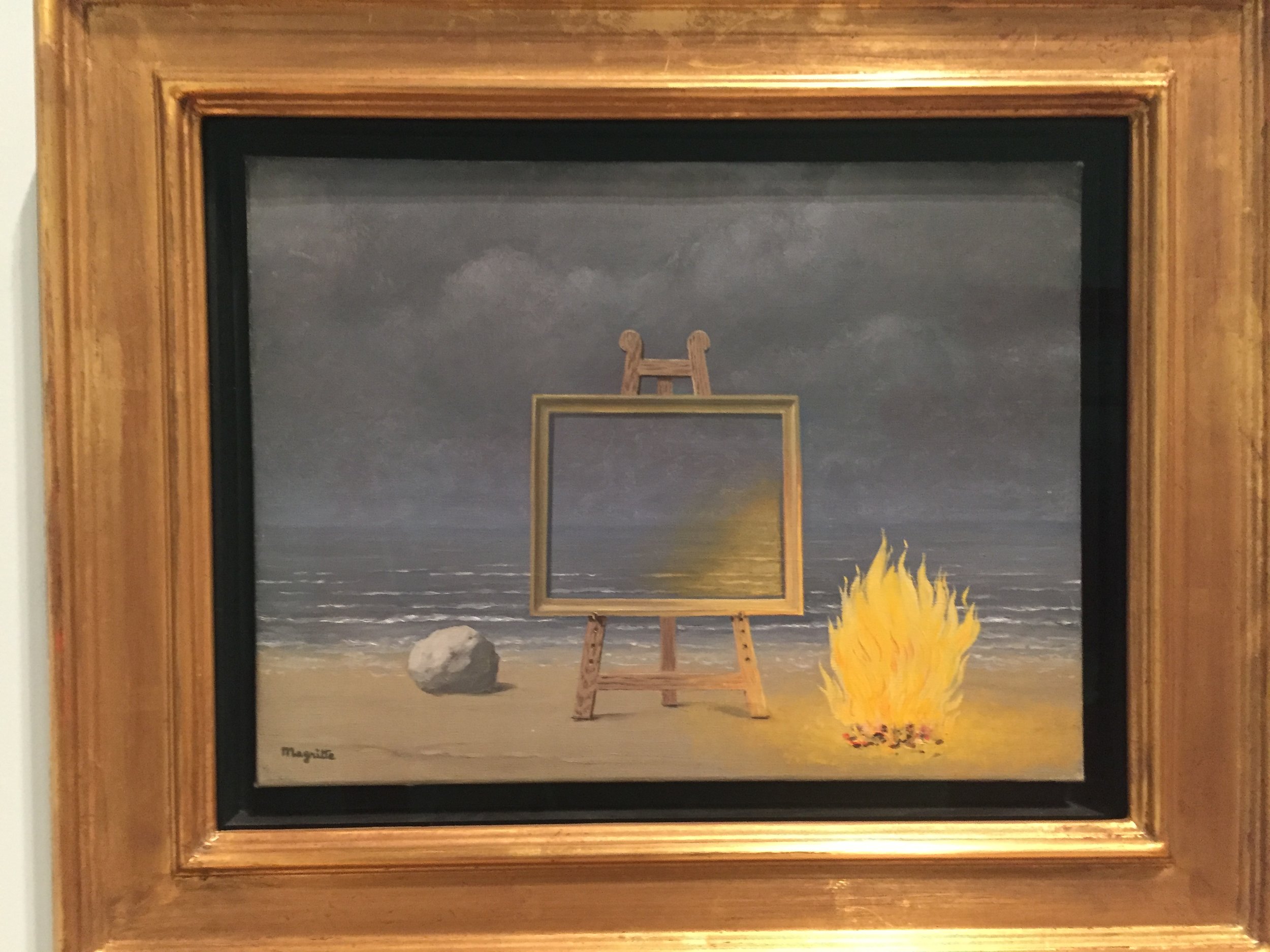Bucket list: Britain 3. Eileen Agar is another one of the women being featured as under represented by history. Her exhibition at the Whitechapel Gallery in London shows similarities with many of the avant-garde women artists working at the time: Collage, surrealism, photography and documents, and a certain eccentricity.
She was Argentinian born to a Scottish father and American mother, both with family enterprises. Growing up in England, she was exposed to Surrealism in particular and became part of that movement (the Whitechapel show contains other "Phantoms of Surrealism" women artists though I wouldn't call Claude Cahun a phantom). Agar was one of few to synthesize surrealism with cubism.
In 1930 she began to work with found objects especially marine life, shells, bones and plants. (in this she reminded me of Charlotte Perriand). She was part of the 1936 International Surrealist Exhibition held London.
Eileen Agar, Erotic Landscape , 1942
Carrington on Madison: an exhibition of fantastical Surrealism
When you entered the recent Gallery Di Donna show of Surrealist artists, it was as if entering a museum. A companion exhibition of Leonora Carrington’s work at a Wendi Norris Gallery pop up makes Madison Avenue into a rare corridor of very special art instead of the latest overpriced shoe.
Carrington had a retrospective last year in Mexico but it did not travel to the US so this is a chance to see a selection of her work. Carrington was mad for Max Ernst, as was Dorothea Tanning (I had just seen her recent retrospective at the Tate, which also did not come to the US) Peggy Guggenheim, Gala Dali and assorted others. Carrington was not even 20 when she met the older artist but he was clearly catnip and they moved in together in Paris as part of the flourishing Surrealist circle. A later relationship with artist Remedios Varo in Mexico, her ultimate home, was also very productive. A lifetime of her work exploring nature, women, magic and domesticity replete with imagery of animals, humans and hybrids is both ethereal and powerful.
Dorothea Tanning opens eyes and doors at the Tate Modern
Like Warhol, Dorothea Tanning, the subject of a new retrospective at the Tate, toiled first in advertising when she came to New York. She had been deeply affected by the groundbreaking MoMA Surrealism/Dada show of 1936 and her ads for Macy’s and others reflected this new awareness of the ability to disassociate body parts and imagery.
She herself was selected by her future husband Max Ernst—then married to Peggy Guggenheim—for a show of women artists at Guggenheim’s Art of this Century gallery when she returned from a stay in Europe. (Was this the moment of the Ernst-Tanning coup de foudre? A year later they were together) Georgia O’Keefe refused to be relegated to this show of ‘women artists” but Tanning accepted. When next invited to participate however in a women-only show in the 70’s second wave of feminism, like many creative women who had already made their own way (Mary McCarthy, Lillian Hellman et al) Tanning was also finally a refusnik. ‘Women artists,” she said, “There is no such thing – or person. It’s just as much a contradiction in terms as “man artist” or “elephant artist”. You may be a woman and you may be an artist; but the one is a given and the other is you.’
She had by then grown into a bold, incisive, self-confident practitioner of painting, poetry, sculpture, costumes and set design.
"Just put yourself in my place, George, " she wrote after she had, in a labor of love, produced the costumes and sets for Balanchine’s new ballet Night Shadow, supported by Lincoln Kirstein, "and you would cry too." Tanning was passionate about ballet, but her production had an unfortunately short shelf life when a new production by the Monte Carlo ballet appeared just a few years later. "I really thought all this time that I had helped to make it a good work, and lots of other people thought so too. I was proud to have worked with you to make such a pretty ballet and I felt it was a real collaboration of all 3 of us. But I suppose it’s a very complicated story and I don’t understand very well how these things work."
Tanning went on to work on other ballets and had plans for many more, but was thwarted by lack of funding and the nature of the collaborative process which stymied her as a solo practitioner .
I wonder what Tanning would have made of the many women-only international shows organized this year in response to #MeToo. Ghetto or Gift? The concurrent counter narrative solo exhibitions—besides Tanning (Ernst), Lee Miller(Man Ray) and Gala Eluard (Dali)—who have finally been removed from the rolls of the ‘muses’-only, tell a more complete tale.
The exhibition runs from February 27 to June 9, 2019 at the Tate Modern. All images courtesy of the Tate.
Magritte’s The Fifth Season, an exhibition of late work at SF MoMA has some surprises
The San Francisco Museum of Modern Art has injected some new energy into the study of late Magritte and though these outliers in the oeuvre are not nearly as pleasing or inventive as those more familiar to us, some, especially those which refine or riff on earlier motifs (bowler hats, fire, mountains and stones) are lively and witty.
The late gouaches are especially nice-small and elegant and returning to the odd juxtapositions which made him not only a master of paint but also the bon mot. Magritte was in touch with the writers and poets of his time and infused his work with the allegories and allusions which preoccupied the Surrealists throughout his life. He believed "‘secret affinities’ existed between unlikely pairs of objects", reminds a wall label. “We know the bird in the cage,” he wrote, but “it is more interesting to replace the bird with a fish or a shoe.”
(The recent biography of the de Menils sheds some more light on this ‘late’ Magritte who appears to have been someone with a real sense of humor.)
The curators say he had largely left surrealism by this juncture. But he himself waffled when asked the question point blank. I appreciated their wall texts which split the difference. “When it comes to matters of the heart”, the curators write referring to image of a rose and sword, “Which is mightier?” They point out the multiplicity of layers in Magritte, his enclosing things in compartments to reveal the mysteries inside. This is the essence of surrealism.
Less successful are the works that hark back to the late Impressionists, or Fauvists and bad Renoir, and bring color and reality to subjects far from those we commonly associate him with—what is commonly called ‘sunlit surrealism’. It felt bumpy as if he himself had sought, during the Nazi regime, to hide his more daring, darker impulses. I suppose it was very contemporary of him to riff on the earlier artists, after all, it is one of the defining artistic motifs of our contemporary period, but for me they fell flat.
Magritte remains nevertheless close to my heart as you can see by my website cover image of his fish — a late gouache — wrapped in pearls. Another fish — Merman? Mermaid? — is part of the exhibition. He is a master at conjuring imagery of disparate things and bringing new dimension and meaning to each.
Also check out artist Ali Fitzgerald’s funny takes on some of Magritte’s iconic imagery.
The exhibition is up until October 26 and will not travel. A good excuse to visit SF where it is much cooler during the summer than the most of the rest of the US.

